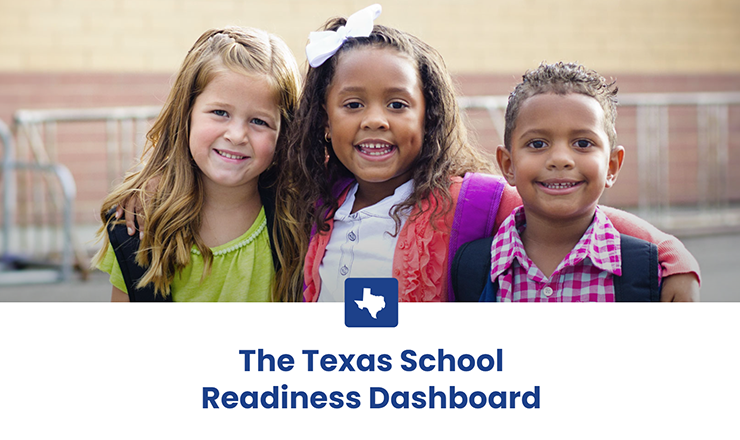State legislators are off to the races! Nearly three quarters of states have gaveled in for the 2024 session, and several more will convene later this month. This post marks the starting line for our monthly blog posts highlighting prenatal-to-3 state legislative trends.
In 2023, states made substantial policy changes to support young children and their families. This year, momentum continues, with an emphasis on policies to support working families, as paid family leave and tax credits gain support across the aisle in many states. Lawmakers have also proposed bills to support the child care workforce and provide access to doula services under Medicaid.
In this post, we offer a sample of legislative action in states throughout the country.
Paid Family Leave
In 2023, we saw exciting progress on paid family leave as both Maine and Minnesota enacted legislation to adopt statewide programs. On January 1, 2024, Colorado became the 10th state to fully implement a paid family leave program when benefits officially became available to families. As Congress continues to investigate a federal solution, state policymakers across the country are introducing paid family leave legislation again this year.
- Hawaii: Lawmakers have introduced multiple paid family leave bills, including H.B. 1768 and H.B. 1658, which would create a statewide program. Other bills would establish a paid family leave program for state and county employees only.
- New Mexico: The short session (just 30 days this year) isn’t stopping legislators from introducing evidence-based policy proposals, including S.B. 3 and H.B. 6 to create a statewide paid family leave program of up to 12 weeks.
- New York: A. 8465 would modify the state’s existing paid family leave program. The bill would increase the duration of leave from 12 to 26 weeks and increase the wage replacement rate. Additionally, Governor Kathy Hochul announced a proposal in early January to expand the program to provide up to 40 hours of paid leave for routine prenatal appointments.
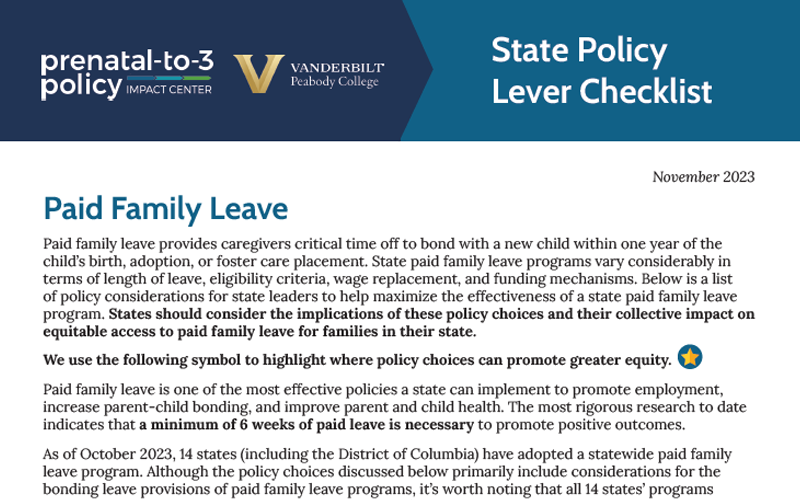
Our State Policy Lever Checklist contains a list of policy considerations for state leaders to maximize the effectiveness of a state paid family leave program.
Child Tax Credits & Earned Income Tax Credits
Due to legislation enacted in 2023, several states’ child tax credits (CTCs) and earned income tax credits (EITCs) are increasing effective tax year 2024. Montana became the most recent state to implement a refundable EITC equal to at least 10% of the federal credit. Eligible taxpayers will be able to claim the increased credit when they file their 2024 taxes in early 2025. So far this year, these policies continue to draw bipartisan interest on both the state and federal levels.
Child Tax Credits
- Kentucky: S.B. 12 would create a refundable state CTC for eligible children under age 6. The maximum benefit would be $1,000 per child and would phase out as household income increases.
- Michigan: H.B. 5264 would create a refundable state CTC equal to 50% of the federal credit.
- West Virginia: Legislators have introduced several bills this year to create a state CTC in West Virginia. H.B. 4614 would create a refundable state CTC with a maximum benefit of $1,000 per eligible child under age 5. S.B. 184 and S.B. 309 would establish a CTC equal to 10% of the federal child tax credit. Taxpayers would be able to claim the new CTC or a new child and dependent care tax credit, but not both.
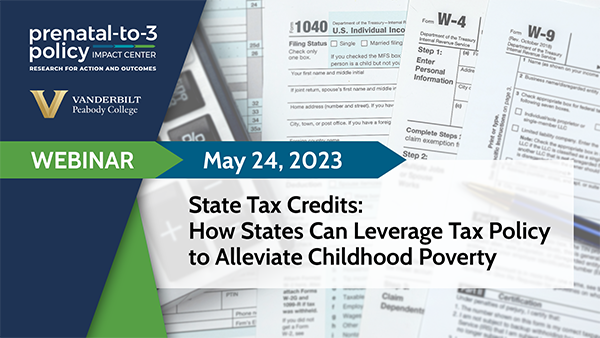
Our state tax credits webinar explored some of the most powerful ways that states can alleviate childhood poverty.
Earned Income Tax Credits
- Missouri: H.B. 1913 would make the state’s EITC refundable. The state currently has a nonrefundable EITC equal to 10% of the federal credit.
- Virginia: Governor Glenn Youngkin included an increase to the state’s partially refundable EITC in his 2024-2026 biennial budget proposal. The proposal would increase the nonrefundable portion of the state EITC from 20% to 25% of the federal credit. The proposal also includes a budget allocation for community-based organizations to provide EITC outreach and awareness, with the goal of increasing utilization of the state credit.
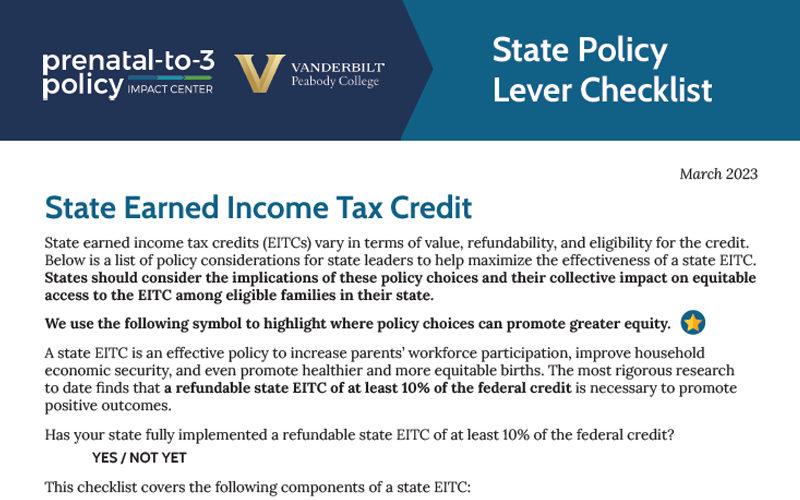
Our State Policy Lever Checklist helps lawmakers make effective and equitable decisions about EITC components, such as eligibility and funding.
Child Care Subsidies
States seem to be following Kentucky’s example, with a trend of bills to make child care educators categorically eligible for child care subsidies. So far, lawmakers in Indiana, Nebraska, New Hampshire, New Jersey, Vermont, and Virginia have introduced legislation. Washington state goes a step further and introduced a bill to expand their categorical eligibility to Early Head Start and Head Start teachers.
States are also considering legislation to increase eligibility for child care subsidies and reduce copayments:
- Florida: Lawmakers in the Sunshine State have introduced multiple bills related to child care subsidies. Companion bills S.B. 342/H.B. 361 would increase the income eligibility for subsidies from 150% to 250% of the federal poverty level (FPL), and companion bills S.B. 916/H.B. 929 would limit copayments to 7% of a family’s income.
- Illinois: H.B. 4432 would increase income eligibility for child care subsidies from 225% to 400% of the FPL.
- New Jersey: In addition to making child care educators categorically eligible for child care subsidies, companion bills S. 2241/A. 1920 would also increase income eligibility from 200% to 300% of the FPL.
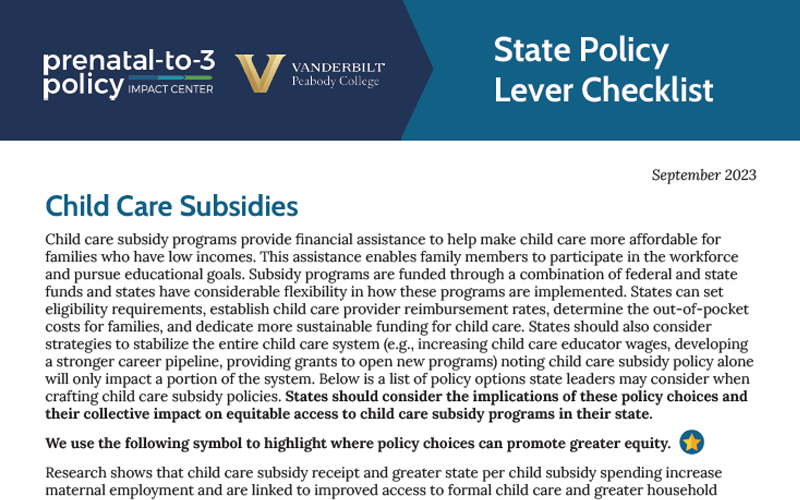
Our State Policy Lever Checklist for child care subsidies covers program provisions that help increase access and affordability.
Community-Based Doulas
In recent years, an emerging trend in states across the country is legislation to support reimbursement for doula care under Medicaid. California increased doula care reimbursement under Medicaid on January 1, 2024, and is now providing the highest reimbursement rate in the country. So far this year, state leaders continue to grapple with fair and equitable reimbursement for the wide spectrum of doula services.
- New York: S. 8080/A. 8529 would direct the Department of Social Services to establish and maintain a community doula directory for the purposes of Medicaid reimbursement and doula services promotion to Medicaid recipients. Moving quickly this session, the bills passed the Senate and Assembly in late January.
- Nebraska: L.B. 1278 would reimburse full spectrum doula services under Medicaid. The bill would also establish a stakeholder workgroup to develop an implementation plan, including a reimbursement rate.
- South Dakota: In response to the introduction of H.B. 1081, which would extend Medicaid reimbursement for services provided by a registered doula, the Department of Social Services announced plans to establish doula reimbursement through Medicaid via administrative rule instead.
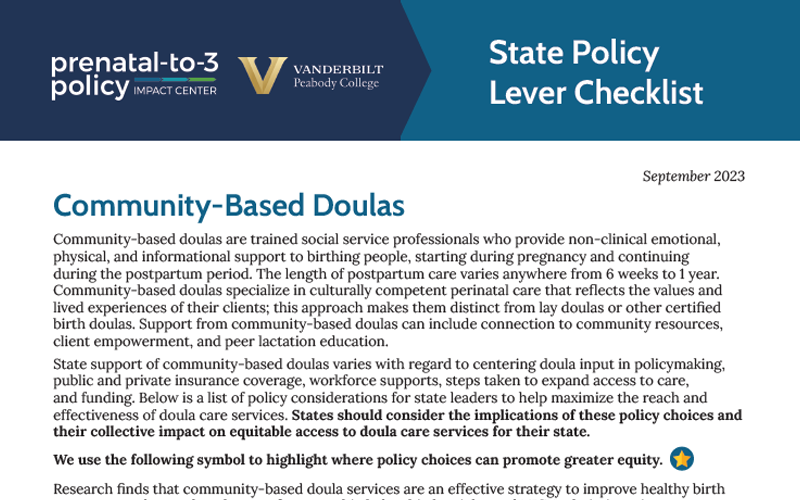
Our State Policy Lever Checklist for community-based doulas helps lawmakers consider workforce supports, insurance coverage, and other factors in access to care.
These updates provide a snippet of the type of legislation introduced so far in the 2024 session. As our team continues to track state legislation and administrative changes for our 12 evidence-based policies, we will continue to post monthly state policy updates on our blog through June. Follow us on social media and sign up for our newsletter and blog email updates to stay up-to-date as 2024 legislative sessions progress.


